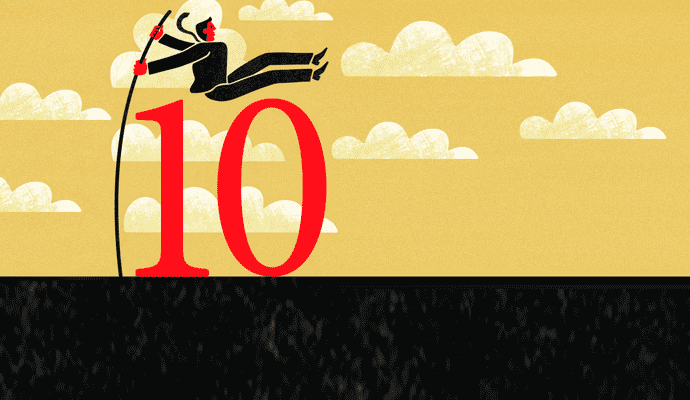Fearlessness: The Last Organizational Change Strategy
Corporate courage has faltered in the wake of September 11, 2001, and the dot-com crash. Management expert Margaret Wheatley says that leaders must face reality — and maybe abandon e-mail.
If a company is only as good as its people, companies today have much to worry about. The reason: Their employees are under unprecedented strain. In an economic environment that demands increased productivity, leaders are tightening control over their organizations and asking employees to do more work in less time. At the same time, employers are paying little attention to their employees’ development or satisfaction. Margaret Wheatley, an expert in management, founder of the Berkana Institute, and the author of Leadership and the New Science: Discovering Order in a Chaotic World (Berrett-Koehler, 2006) and, most recently, Finding Our Way: Leadership for an Uncertain Time (Berrett-Koehler, 2007), suggests that leaders at all levels can cope with this situation with fearlessness — by building a strategy driven by quality and the values of the people in their organization, rather than by quarterly performance. But she also believes that very few public companies will lift themselves above the short-term fray to get this message.
Wheatley sat down with strategy+business in June at the Shambhala Institute for Authentic Leadership in Halifax, Nova Scotia, to discuss how fearlessness plays a critical role in addressing the problems facing corporations today.
S+B: In the new course you’ve developed for the Authentic Leadership Program at the Shambhala Institute, you talk about fearlessness and why it’s significant. Where does this idea come from?
WHEATLEY: For several years I’ve noticed a deep disappointment and despair, even among businesspeople whom I had formerly thought of as engaged, capable leaders. During the 1980s and ’90s, I spent a lot of time working on large-systems change, helping organizations become more committed and productive, with the full engagement of people at the top. Many of these people were heroes to me. They knew about the value of participative management; they had made great gains in both the traditional measures of profitability and in innovation and viability. But since 2001, pressures on leaders have increased dramatically. They no longer have time or flexibility. They feel caged, oppressed, exhausted. The demand for quick results and the pressure from boards of directors and oversight committees leave them no time for development or learning.
So I watched these leaders revert. “Forget about values, learning, or participation. We just need to execute.” By which they mean, “Drive performance now.” This business rhetoric, the notion of execution, is really quite violent: You “execute” people. It gives me the shivers.
Watching this made me start to think about fearlessness: Who, in these organizations, was going to take a stand on behalf of quality and other values? And if people did take a stand, would it even make a difference?
That thinking led me to a more populist position than I had ever held before. I gave up on the idea of change led by senior executives. I started looking for people inside the organization who were interested in change, encouraging them to do what they could, but not to wait for people at the top — to just act within their own domain. I believe there’s still a possibility of creating beneficial results on these “islands of hope” within the larger companies.
S+B: When did this change take place, and why did it happen? What’s the cause?
WHEATLEY: I started to see a difference around 2001 in response to September 11, and also in response to corporate scandals and the end of the dot-com bubble. Once fear set in and risk increased, too many leaders reverted to command and control. This was exacerbated by the impact of technology, globalization, and constant communication. I speak to a lot of people in corporations, and they say there’s no time to think. No one has time to learn from experience. If a move doesn’t work the first time, you pick up the pace the second time. Maybe it’ll work then. People in project management and training have incredible time-compression demands.
One company in Australia developed an extraordinary program on leadership, involving coaching and personal awareness. The CEO got a lot of credit for his involvement and support. But then after they got it up and running, it moved to human resources for the roll-out, and suddenly the internal clients started saying, “What? A three-day program? I can only give you one day.” Some people even asked for half a day. So the designers said, “OK, we’ll give you a one-day program, but you won’t get the same results.” And by compressing it that way, the entire value of the program is lost.
Another factor is the intensifying of communications technology. E-mail has given us a 10-fold increase in our work and a 100-fold decrease in our ability to pay attention. Last year a study came out about the American worker, and the results showed that people could tell you when their day began but not when it ended. We are so overwhelmed by information that we’re becoming numb. E-mail also takes away the need to meet face to face, which has caused a lot of misunderstandings and ultimately affects relationships. Today people deal with tough issues by e-mail even if they’re down the hall from each other. It’s also led to behaviors such as people using their Blackberrys or phones to e-mail or text message under the table at meetings. The most common posture now is the downward glance, whether it’s in meetings or elsewhere.
There is also an intense focus on short-term results at the expense of all else. There is pressure to get projects done faster with quicker turnaround times and unreasonable deadlines. We’ve entered the era of believing that a client or boss can just ask for things sooner without losing any quality. The thinking today is that you don’t have to worry about how a decision will affect long-term success — just think short-term and it somehow will work itself out. Employees are now evaluated on short-term metrics that don’t really measure anything of value for the longevity of the company. These measures get tied to incentives and rewards and start to transform behavior in a very negative way.
S+B: And you’re saying that all of this leads to worse performance in the end.
WHEATLEY: If leaders took the time to engage people instead of clamping down on them, not only would employees perform better, they’d also be more innovative and focused. It would lead to less stress, less illness, and more productivity. All the actions right now are pushing the American workforce toward increasing levels of disengagement. People show up to work to collect a paycheck. The Gallup Organization did a survey that indicates how people are feeling about their workplace. Last year, more than 70 percent of the American workforce felt disengaged, up from around 33 percent in 2000. That’s what happens if you squeeze fewer people to do more work, give them shorter deadlines, measure their work using meaningless metrics, and, to top it off, treat them with profound levels of disrespect.
S+B: If leaders know better, why do these kinds of behaviors persist?
WHEATLEY: I think the main factor is that the leaders themselves don’t know how to relate to uncertainty. They don’t know how to deal with a future that they can’t plan for. They can’t even plan for their own future: In the past few years, there have been record levels of CEO firings. Meanwhile, the people who recruit and select chief executives cling to the belief that one person should have the answer. And when the new CEO doesn’t have it — because no one person does — they just go for another, more heroic leader. These are very powerful dynamics that reinforce one another and push organizations in the wrong direction.
S+B: So where does fearlessness come in?
WHEATLEY: To be fearless is to face the reality of your situation; to recognize what you can actually achieve given these very powerful cultural and systemic dynamics, without deluding yourself that you can, through your own act of will, be more powerful than you are. And then, at the same time, deciding who you want to be, so that you can stand firm for the practices you believe in most deeply and so you can accept criticism. This type of fearlessness can be found in anyone — senior leaders, midlevel leaders, supervisors, or workers.
If you’re a leader, you have to be thoughtful about this. Even a senior leader from a major corporation who is extremely successful and uses very high engagement strategies probably won’t be able to convert the whole company. I’ve given up on large-scale transformation, but smaller measures can still effect change. For example, helping a few people realize their competence, value, talents, or creativity. But it’s difficult for leaders to accept this kind of thinking.
For once you accept that, you open yourself to accepting other ideas, such as the belief that human beings aren’t the masters of the universe and that we can’t make our own rules, no matter how powerful our technology is. That’s not how the planet works. Or recognizing the ways in which the pursuit of material goods and consumer comforts, even as this pursuit makes people healthier and live longer, can also deaden people in other ways and destroy the essence of culture, community, and family. One thing I’ve felt deeply working with a number of indigenous communities in Africa, Australia, and North America is that the lure of acquiring material goods is stronger than any other lure in the world right now, especially to teenagers. A lot of them leave home to support their families and experience a better life; we have huge migrations occurring all over the planet. And a society whose practices are premised only on economic growth is going to self-destruct, because materialism, if left unchecked, destroys the best aspects of being human and brings out our baser qualities.
It’s not a pretty world right now. Inside and outside organizations, things people thought were protected are falling apart. Within organizations, many people are left to their own resources. To break away from this situation, fearlessness is called for.![]()
Art Kleiner (kleiner_art@strategy-business.com) is editor-in-chief of strategy+business and author of Who Really Matters: The Core Group Theory of Power, Privilege, and Success (Doubleday, 2003).




